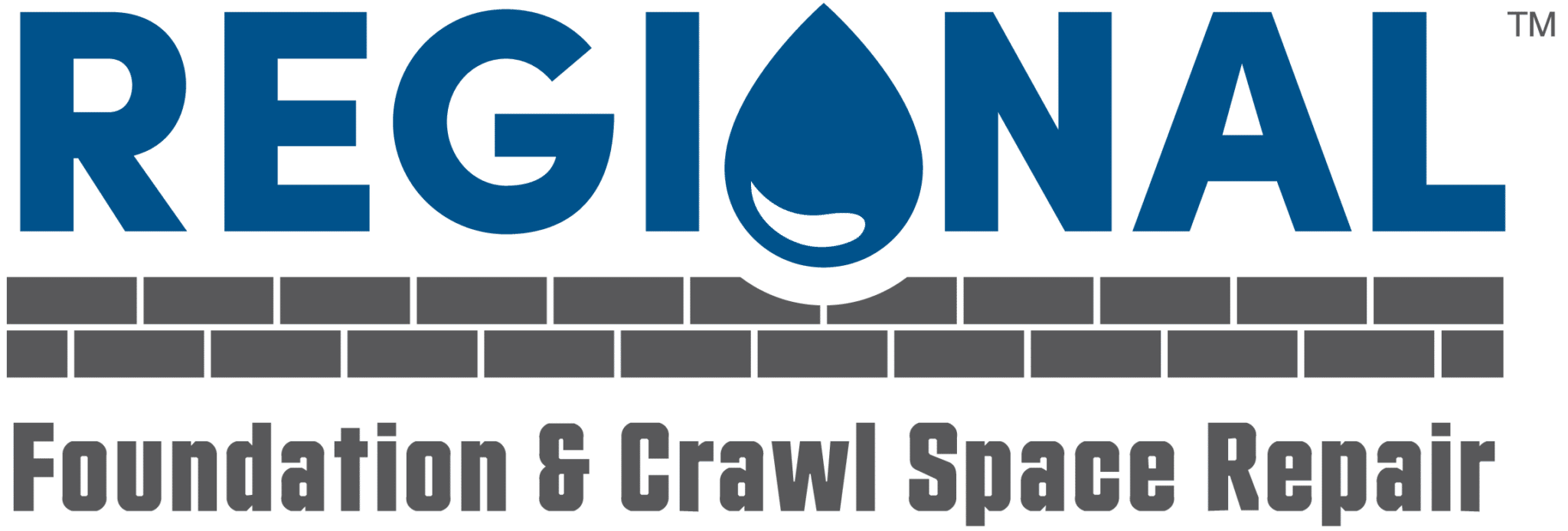If you notice that your basement floor is no longer level, it is likely due to an underlying structural problem. Since that is the case, having your basement floor leveled sooner rather than later is crucial. The purpose of this article is to explain why a floor in your basement can become unlevel and present the most common solution.
Why Do Basement Floors Become Unlevel
The top reason why a basement floor becomes unlevel is foundation settlement. Foundation settlement occurs when the soil below your foundation shifts or sinks. Since your foundation depends on that soil for support, it will move along with the soil.
A minimal amount of uniform foundation settlement is usually typical after construction. However, another form of settlement, differential settlement, involves significant uneven shifts that result in severe structural damage.
Differential settlement can affect your entire home and manifest itself in several ways. One of the most common signs of this type of settlement is an unlevel basement floor.
Fixing Unlevel Basement Floors
Installing piers is the most comprehensive and reliable method for leveling a basement floor. Here is a quick breakdown of how a professional foundation repair team will conduct that process:
- Excavate around your home down to your foundation’s footing.
- Insert either helical piers or push piers into the earth.
- Connect the piers to the foundation via a bracket.
- Use the piers to raise the foundation as much as possible without causing damage.
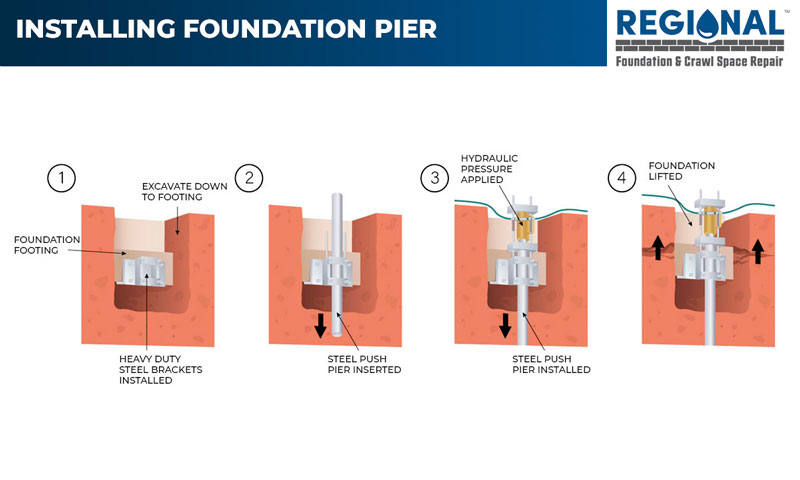
An experienced foundation professional can fix your unlevel basement floors through that simple process. Additionally, one of the main benefits of using piers to level a basement floor is that your home will become far more stable, making future differential settlement unlikely.
What’s the Difference Between Push Piers and Helical Piers?
Above, we mentioned that there are two main types of piers that foundation repair teams use to level homes. Both helical and push piers serve this same purpose, but they have distinct differences you should understand. The main way that these piers differ is in their means of installation.
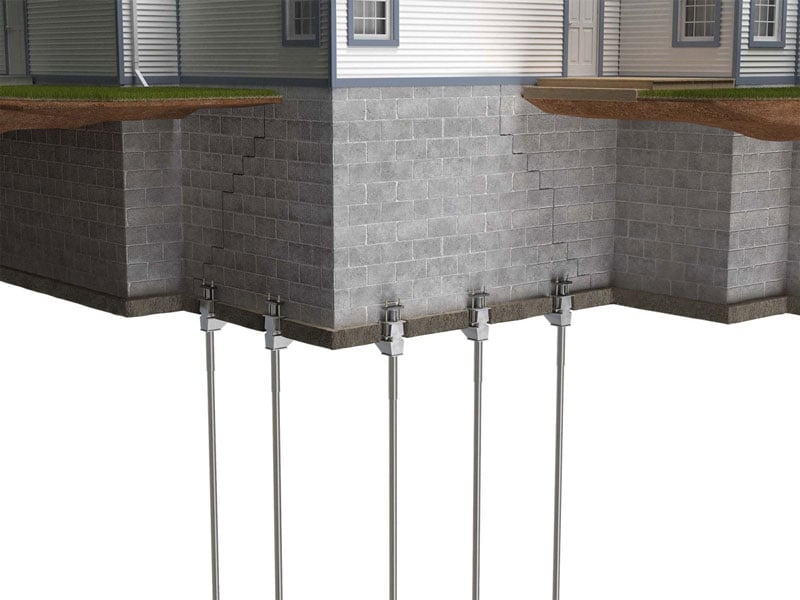
To install push piers, your foundation team will use a hydraulic pump to press the piers straight down into the earth. That team will continue pushing the piers until they reach bedrock or a firm layer of soil. In either case, the connection the piers form between the foundation and the stable strata provides additional support to your home.
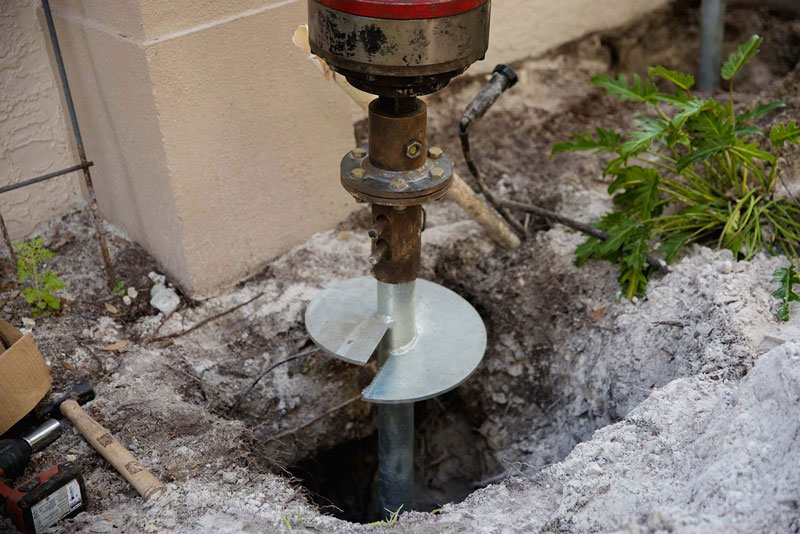
Unlike push piers, helical piers do not require a hydraulic pump. Instead, helical piers are essentially giant screws that your foundation team will twist into the earth. As they rotate, the helical piers become firmly embedded in the soil, providing extra stability to your foundation.
Evaluating Basement Floor Slope
Sometimes, a basement floor slope may be so insignificant that it’s difficult to determine if it is a genuine problem. Fortunately, there are some guidelines you can follow to decide if your pitched floor needs professional attention.
The main factors to consider are the floor’s vertical rise, and horizontal run, and how they relate. Generally, if your floor slopes more than one inch over a distance of ten feet or less, it is worth repairs. However, while that guideline is helpful, you should seek repairs anytime your floor becomes difficult to walk on. Regardless of the specific slope, a floor that is difficult to walk on is worth repairing because it can present a trip hazard.
Additional Signs of Differential Settlement
Earlier in this article, we noted that differential settlement is the primary cause of an unlevel basement floor. We also mentioned that a sloping floor is just one of the signs that this form of settlement has occurred. Below are a few more signs that your home is experiencing differential settlement:
- Foundation cracks
- Jammed windows
- Stuck doors
- Wall, ceiling, and floor cracks
- Tilted chimney
- Sloping floors throughout your home
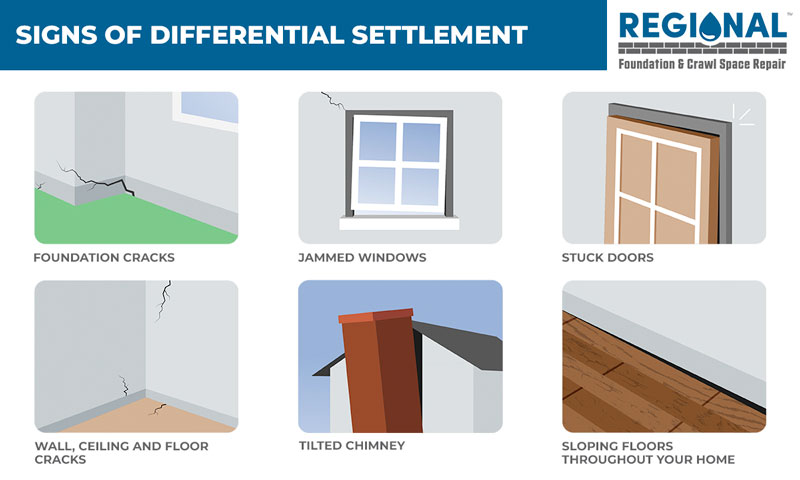
It is essential to recognize these signs because differential settlement can dramatically reduce your home’s structural integrity. If you notice one or more of these indicators, the best approach you can take is to contact a trusted foundation professional in your area.
Get the Foundation Help You Need
Leveling a basement floor is not something that you should attempt to do on your own. Instead, it is always wisest to contact an expert foundation repair team to diagnose foundation problems and find the proper solution for your home.
At Regional Foundation & Crawl Space Repair, we have decades of experience repairing crawl spaces, foundations, and unlevel concrete. If you live in Eastern North Carolina and want your foundation evaluated, contact us for a free estimate.
